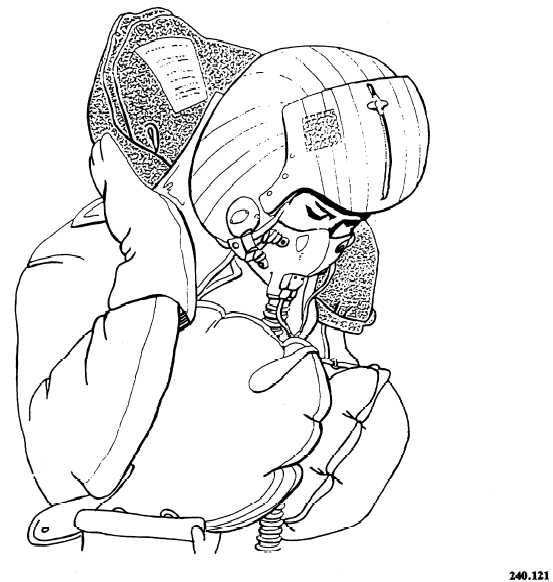Leaving Aircraft. - Grasp the door edges about waist high, and place your feet together over the edge of the hatch, as shown in figure 5-10. Pull your body forward and exit the aircraft.
The NB-8 parachute used in the P-3 aircraft does not have automatic opening features. Therefore, the aircrewman must manually pull the rip cord. Grip the rip cord handle as shown in figure 5-11 and pull it to the maximum length of travel. This allows for complete release of pins from the parachute pack.
Parachute Descent. - Immediately following the opening shock of the parachute, check the condition of the parachute canopy. Assuming you have a fully deployed canopy, locate the two beaded handles on the LPA; pull them down and straight out to inflate the life preserver (fig. 5-12). You may need to squeeze the waist lobes to release the hook-and-pile tapes on the collar lobes. Sometimes it is necessary to manually release the hook-and-pile tapes to allow full inflation of the collar lobes (fig. 5-13). At this point you should raise the visor on your helmet if you are over water and lower it if you are over land.
Four-Line Release. - Actuation of the four- line release system reduces oscillation and provides a method of maneuvering the parachute to an optimal landing site.

Figure 5-13. - Aircrewman releasing the hook-and-pile tapes on collar.
Continue Reading